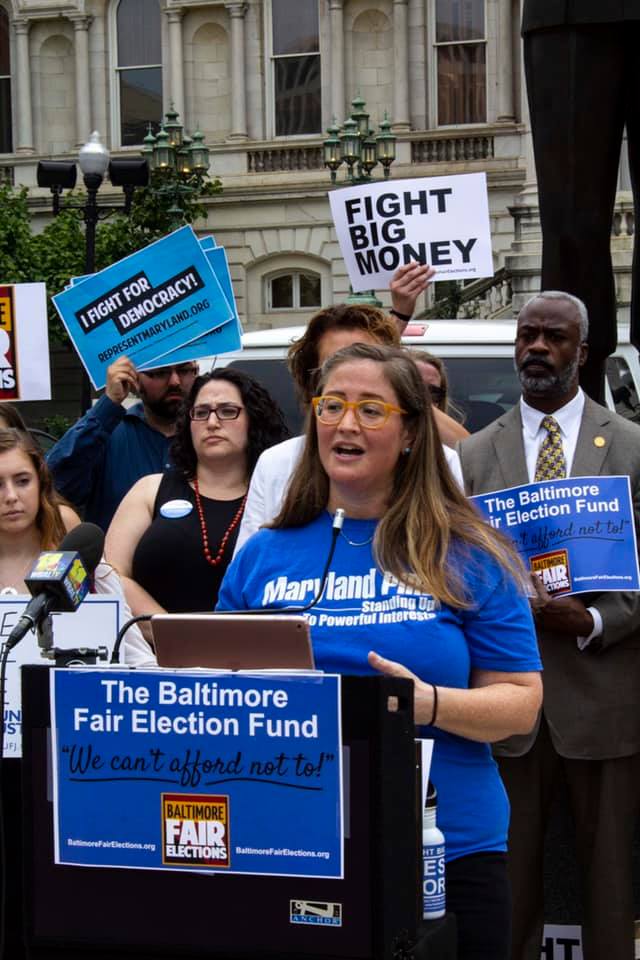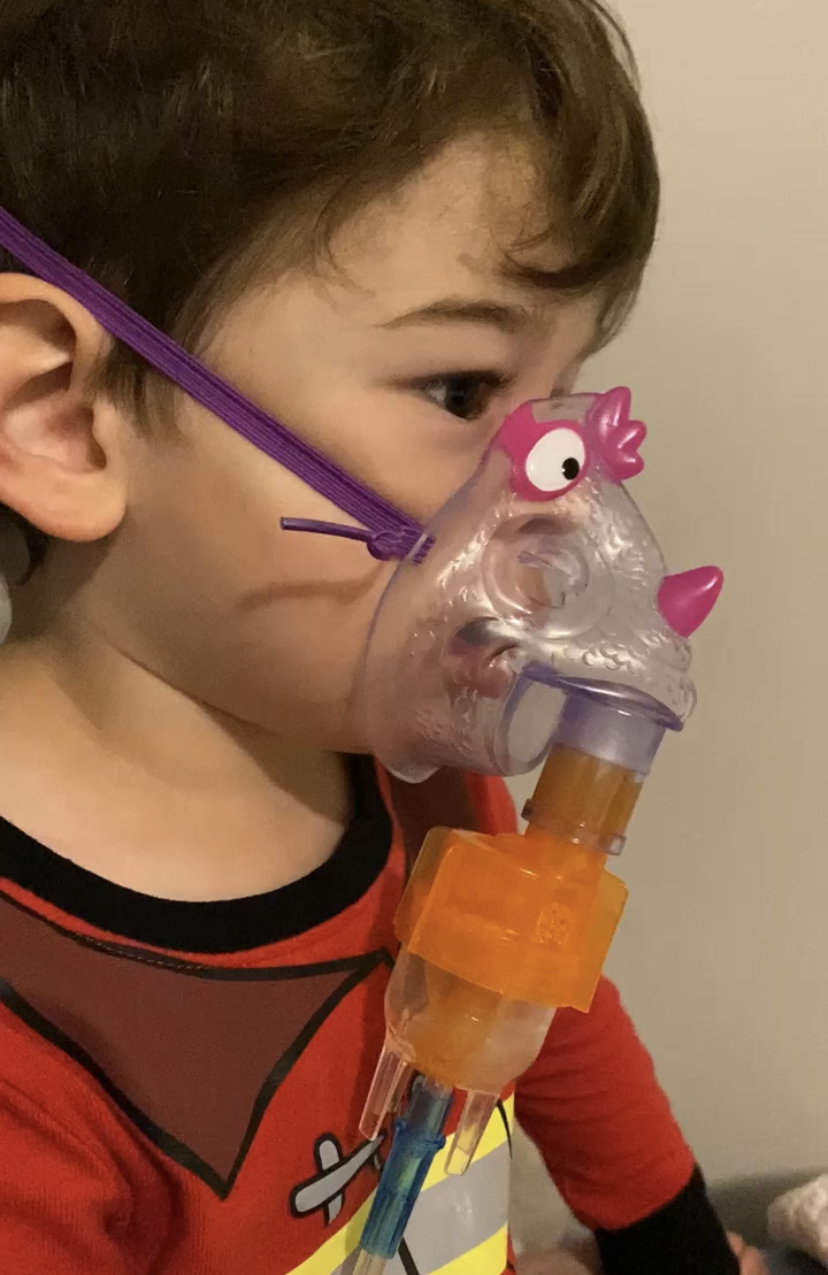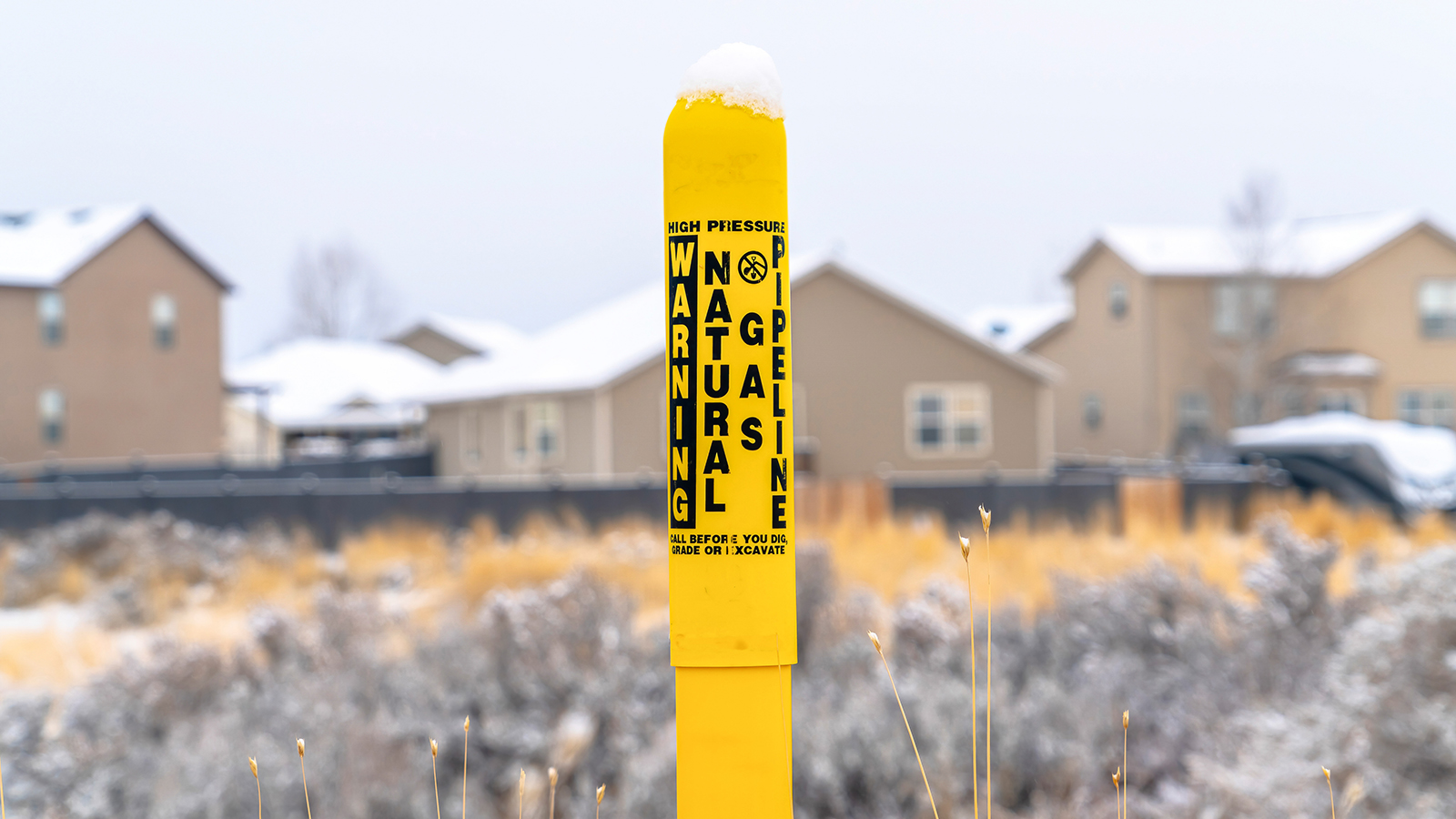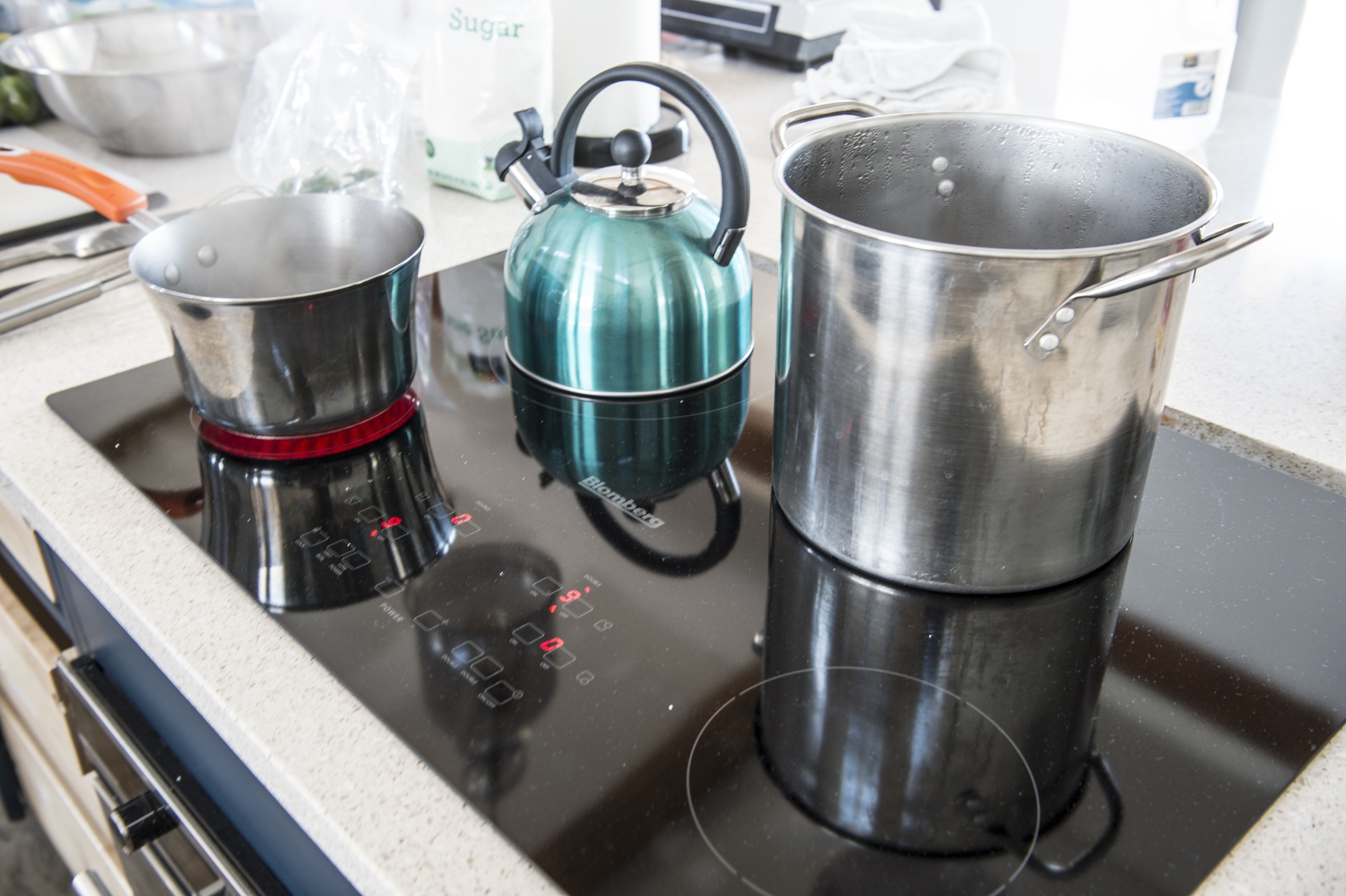
Pollution Free Cooking: how to make the switch from gas.
Induction stoves are efficient, fast, and precise. They are also safer and less harmful to indoor air quality than cooking with gas. The Inflation Reduction Act includes $4.5 billion in funding for states to provide rebates and tax credits for new electric appliances including stoves, cooktops, and wall ovens.

Want to buy an induction stove?
Rebates and incentives for electric cooking:
The Inflation Reduction Act includes $4.5 billion in funding for states to provide rebates for electric appliances including stoves, cooktops, and wall ovens (both electric and induction).
You may be eligible for a rebate of up to $840 on an electric cooking appliance and up to an additional $500 to help cover the costs of converting from gas or propane to electric. That means, depending on the model you go with, you could get a brand new induction or electric stove for as little as just a couple hundred dollars.
In addition, you may be eligible for a tax credit up to $4,000 if you need to upgrade your home’s electrical panel to accommodate electric cooking and other electric appliances, heating and cooling.
How do I know if I’m eligible?
Each state will enact the exact framework, but the guidelines set out by the federal government are dependent on household income with families making 80% or less of the median household income qualifying for up to 100% of a new appliance up to $840 and those making 80%-150% of the median household income getting 50% of the cost of a new appliance.
When I learned my son had asthma, I started to worry about using our gas stove.Emily, Baltimore

Benefits of electric cooktops and stoves:
- Electric stoves don’t create indoor air pollution like gas stoves.
- Flame free induction cooking is safer for kids and families.
- Electric and induction stoves are fast and efficient—many have a “quick boil” feature (quicker mac and cheese for hungry kids).
- Induction stoves offer precise temperature control.
Things to know about electrifying your cooking:
- Electric and induction appliances vary in price and the Inflation Reduction Act includes money (up to $840) to help consumers pay for electric or induction cooktops, ranges and stoves.
- You may need to update your electrical panel, but these costs (up to $4,000) may also be covered by the Inflation Reduction Act through tax credits.
- If you’re not ready to fully commit to an induction cooktop, there are portable plug in options that are very affordable.
Why people are getting rid of gas:
- Cooking with gas produces dangerous levels of indoor air pollution. As a result, children living in homes where people cook meals with gas-powered appliances have a 42% higher chance of experiencing asthma symptoms.
- Gas infrastructure and appliances has been prone to leaks and explosions, endangering communities.
- Gas stoves burn methane gas, a potent greenhouse gas. Gas infrastructure contributes to climate change and studies suggest leak rates throughout the supply chain are high enough that they offset any greenhouse gas benefit of gas over coal.
Induction Cooking 101
Induction cooking is steadily winning over Marylanders as the latest and greatest in cooking technology. Efficient, precise and safe, cooking on induction stoves provides numerous benefits not just for passionate chefs and food lovers, but for the overall health and wellbeing of Maryland families.
How does it work?
Induction cooktops use magnetism to heat metal cookware. When you turn an induction stove or cooktop on, electric currents underneath the smooth cooking surface create a magnetic current within the cookware being used. This direct transfer of energy results in instant, efficient heating; in fact, induction cooktops heat up faster than both gas and traditional electric coil cooktops, with some models boiling a pot of water in just 2 minutes. Induction also results in unbeatable and precise control and consistent levels of heat, as the appliance responds immediately to changes in temperature by adjusting the strength of the electric currents.
Induction is great for homes in hot places, as only heating the pan means that lost heat energy won’t contribute to warming up your kitchen. It’s also safer, since there’s no open flames or hot surfaces involved, and the smooth cooking surface makes cleaning up a breeze.
Induction cooking works for all types of cuisines – whether you’re cooking with a wok, making cooktop breads like tortillas or naan, or whether you need to steam, char, sear or boil. Induction can do it all.
How is it more sustainable?
Because induction stoves are powered by electricity, they present a more sustainable alternative than gas. Electric-powered appliances have the potential to run cleaner and greener as America’s energy system is progressively powered by more renewable energy sources than ever before. Switching to induction also means homes can transition away from planet-warming methane gas as a fuel source, a necessary step in electrifying buildings and reducing emissions to mitigate the impacts of climate change.
Induction cooktops are also three times as energy efficient as gas stoves and nearly 5-10% more efficient than electric resistance. Due to the electromagnetic technology used in induction, the vast majority of the electricity consumed by an induction stove goes directly towards cooking the food. In contrast, gas stoves allow significant amounts of heat energy to escape into the atmosphere.
If every cooktop sold in the U.S. in 2021 used induction technology, American consumers would save $125 million and 1,000 gigawatt hours of electricity.
As a result, induction cooktops won the ENERGY STAR Emerging Technology Award for 2021-2022, because they meet “rigorous performance criteria to reduce energy use and lower greenhouse gas emissions.”

The Problem with Methane Gas
Gas stoves burn methane gas, a fossil fuel that pollutes our air and poses risks to public health.
A hidden health hazard
Cooking with gas can produce levels of indoor air pollution that would be illegal outdoors. According to the American Medical Association (AMA) cooking with a gas stove increases household air pollution and the risk of childhood asthma. Cooking with gas releases pollutants into our homes that can lead to the development of asthma, especially in children, and worsen symptoms for those with preexisting respiratory illnesses.
One report compared the effects of using a gas stove around kids to those of second-hand smoke exposure. Just running a gas stove for one hour can lead to unsafe pollutant levels. During the holidays, many Americans cook for far longer than one hour— with the stove and oven on for hours. An indoor air quality experiment conducted in 2018 by HomeChem found that pollution levels in a home while cooking a Thanksgiving meal briefly exceeded those of the world’s most polluted cities.
Gas stoves work by combusting methane gas, which when burned emits nitrogen dioxide (NO2) and carbon monoxide, in addition to smaller amounts of formaldehyde and particulate matter. Methane gas is colorless, odorless and explosive, so leaks present a safety risk. A sulfur-based chemical called mercaptan has to be added to make it smell so leaks can be easily detected. While exposure to formaldehyde and particulate matter can result in nose, throat and lung irritation and aggravated asthma symptoms, the two most concerning pollutants when it comes to health are nitrogen dioxide and carbon monoxide.
- Nitrogen dioxide: Gas stoves have been shown to emit levels of NO2 that the EPA has ruled illegal outdoors. Exposure to nitrogen dioxide, even at low levels for a short time frame, can worsen symptoms of asthma and other respiratory illnesses. The developing lungs of children are especially vulnerable. Exposure to NO2 increases the likelihood of a child developing asthma symptoms by 42%, and the odds of a lifetime diagnosis by 24%. Another report from Johns Hopkins found asthma flare-ups were directly related to high concentrations of NO2. One report found that the effect of a gas stove on a child with asthma is comparable to the impacts of secondhand smoke from living with a smoker.
- Carbon monoxide: A Lawrence Berkeley National Laboratory simulation found that running a gas stove for just one hour with no ventilation could raise indoor concentrations of carbon monoxide by 3,000 parts per billion, which far exceeds health-based standards. Short term exposure to carbon monoxide can result in negative health impacts including memory loss, dizziness, headaches and seizures, while more severe exposure can lead to carbon monoxide poisoning, loss of consciousness, permanent brain damage and death.
Leaks, explosions and other dangers
Methane gas infrastructure has been prone to leaks, endangering communities and the environment. A gas pipeline incident occurs somewhere in the U.S. approximately every 40 hours. In fact, we know that 2,595 gas pipeline incidents occurred from 2010 to 2021 – and those are just the leaks that were reported to the federal government. The total number is much higher.
In Maryland there have been major gas explosions in communities across the state including:
- In 2016, a gas explosion at the Flower Branch apartment building in Silver Spring, just outside Washington, D.C., killed seven people and injured 65 others, after a device to regulate the flow of gas into the building failed, causing gas to build up for several hours before it was ignited.
- An August 2019 explosion in Columbia, Maryland, destroyed a shopping center, dislocating 20 businesses. The explosion occurred outside business hours, averting the potential for significant loss of life. PSC staff later determined that Baltimore Gas & Electric had violated safety standards.
- An August 2020 explosion in Northwest Baltimore killed two people and injured seven others, after maintenance work in a home triggered a gas leak that was ignited by a stove.
- A March 2022 explosion leveled another apartment building in Silver Spring, after a maintenance worker accidentally severed a gas pipeline. The explosion sent 12 people to the hospital.
Impact on climate
While EPA estimates that the rate of leaks throughout the gas supply chain is 2-3%, studies suggest leak rates throughout the supply chain are significantly higher – high enough that they offset any greenhouse gas benefit of gas over coal.
Gas leaks reported to the federal government resulted in the release of 26.6 billion cubic feet of methane gas from 2010 through October 2021, equivalent in its effects on global warming to emissions from more than 2.4 million passenger vehicles driven for a year.
In addition, gas stoves contribute more to climate change than previously thought because many of them continuously leak methane — even when turned off.

In the market for a new stove? Consider Induction
Topics
Authors
Emily Scarr
State Director, Maryland PIRG Foundation
Emily directs strategy, organizational development, research, communications and legislative advocacy for Maryland PIRG. Recently, Emily helped win small donor public financing in Montgomery and Howard counties, and the Maryland Keep Antibiotics Effective Act to protect public health by restricting the use of antibiotics on Maryland farms. Emily also serves on the Executive Committees of the Maryland Fair Elections Coalition and the Maryland Campaign to Keep Antibiotics Working, and the Steering Committees for the Maryland Pesticide Action Network and Marylanders for Open Government. Emily lives in Baltimore with her husband and dog.
Matt Casale
Former Director, Environment Campaigns, PIRG
Find Out More

What are the 2024 Colorado ozone bills?

A look back at what our unique network accomplished in 2023

Lawn care goes electric



